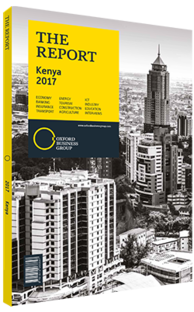Kenyan authorities prioritise security to ensure tourism numbers
One of the most significant challenges facing the Kenyan tourism industry in recent years has been security concerns. As consulates increasingly advised citizens to avoid travelling to coastal Kenya, international arrivals and industry revenues fell, prompting the government to launch a host of new measures aimed at improving security and reducing risks. These efforts have already had an impact, with international arrivals now on the rise, despite the fact that travel warnings for several parts of the country remained in place as of 2017.
Insecurity Issues
In October 2011, following the kidnapping of three European tourists from high-end resorts on the north-eastern island of Lamu, the Kenyan government launched military operations in Somalia in a bid to clamp down on terrorism, kidnapping and piracy. In the ensuing years, terrorist incidents, including a 2013 attack on Nairobi’s upscale Westgate shopping mall, have damaged the country’s reputation internationally. Unrest and election violence in coastal areas, including Kenya’s second city, Mombasa, exacerbated the situation, and security concerns have exerted downward pressure on the tourism industry.
According to the Kenya National Bureau of Statistics (KNBS) 2016 “Economic Survey”, the number of international arrivals to Kenya fell every year from 2011, when it stood at 1.8m, through to 2015, when the figure was at 1.18m, before bouncing back to 1.3m in 2016. Tourism earnings followed the same trajectory, falling from KSh97.9bn ($955.2m) in 2011 to KSh84.6bn ($825.4m) in 2015. According to the Kenya Tourism Board, this contraction was the result of perceived insecurity in the region, noting that arrivals to Mombasa had suffered the most in 2015: international arrivals fell by 41.1% to 59,194 between January and October 2015, down from 101,073 during the same period in 2014.
The trend was further exacerbated by travel advisories announced throughout 2015, which included the key tourist centres of Mombasa Island, the city’s Moi International Airport (MIA), Malindi, Kilifi and Watamu. The advisories were issued by the UK and the US, two major source markets that together comprised around 25% of international visitors in 2015.
Government Response
In a move to improve the country’s image abroad, in addition to bolstering domestic security infrastructure, the Kenyan government has invested significantly in new security mechanisms in recent years. Security upgrades were a major focus for the government in the FY 2015/16 budget, which saw military and police funding surge from $2bn during the FY 2014/15 to $2.3bn.
By November 2015 the US and UK had lifted their travel advisories, prompting a surge in European visitors during the high season: November’s international arrivals rose by 6.7% y-o-y to hit 62,548, according to KNBS statistics. The government also moved to invest in improving the country’s image internationally, with a specific focus on supporting the tourism sector, and increased budgetary allocations to what was then the State Department for Tourism — the department has since received full ministerial status and is now the Ministry of Tourism — to KSh10.7bn ($104.4m) in the FY 2015/16 budget, a 91% increase, and channelling KSh4.5bn ($43.9m) into tourism marketing alone in the FY 2016/17. Speaking to media in January 2016 Najib Balala, cabinet secretary for tourism, said he expects the sector will make a full recovery by 2018, noting the investments made so far had kept the country free of any major security incidents for over eight months.
New Warnings
As of April 2017 the UK and US maintain travel warnings for north-eastern and Somali border areas, including Lamu County and parts of Mombasa. Significantly, MIA was not included in the US ’s travel advisory, which instead identified the Likon ferry as facing a significant risk of a security threat.
The rise in visitors in 2016 is a testament to the work the government has done to address these security concerns. With visitor numbers still growing, it is clear that the government’s efforts have not been in vain.
You have reached the limit of premium articles you can view for free.
Choose from the options below to purchase print or digital editions of our Reports. You can also purchase a website subscription giving you unlimited access to all of our Reports online for 12 months.
If you have already purchased this Report or have a website subscription, please login to continue.

